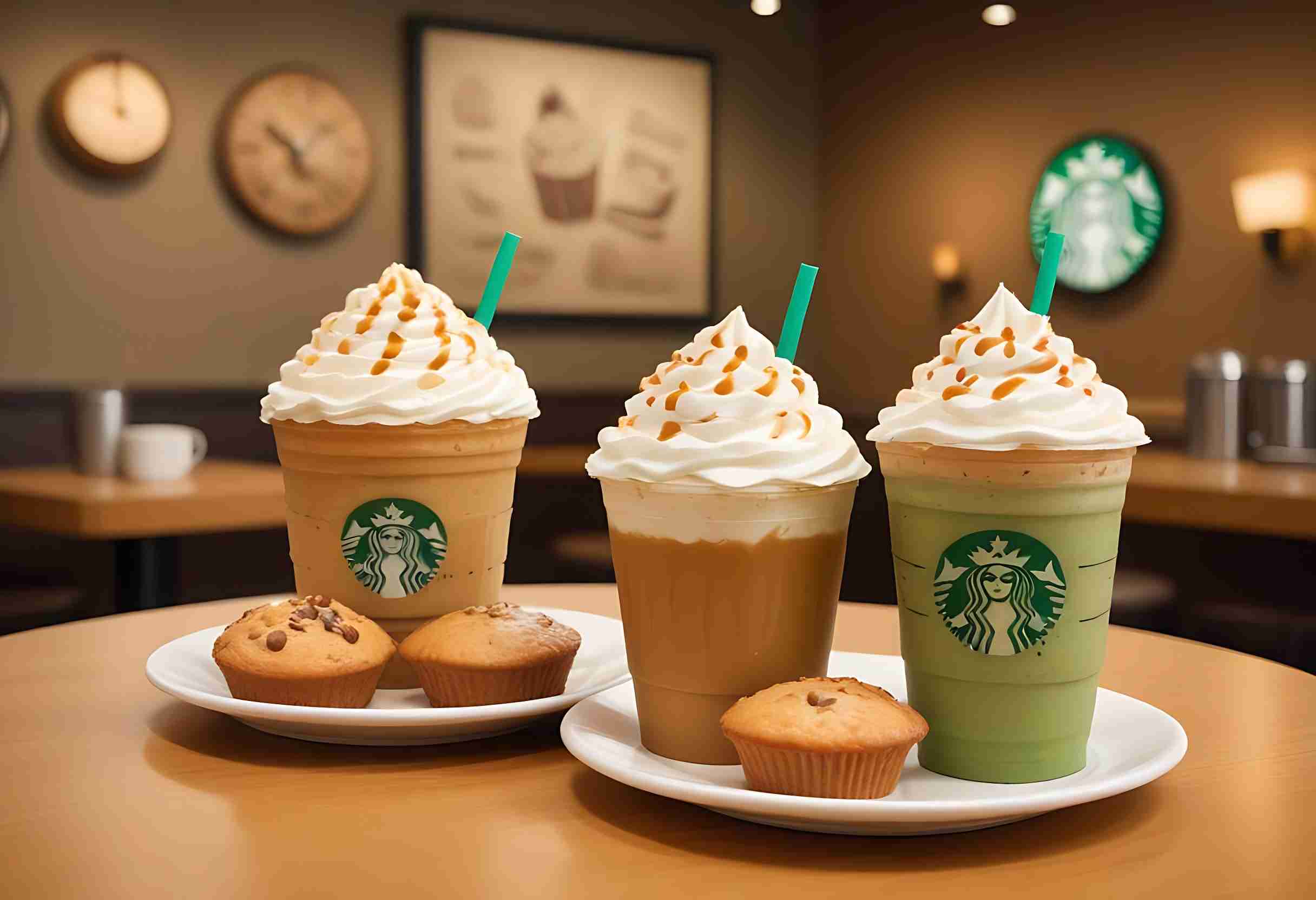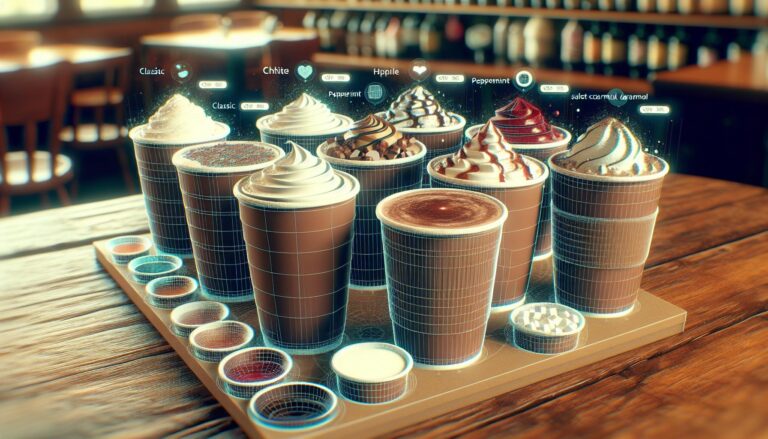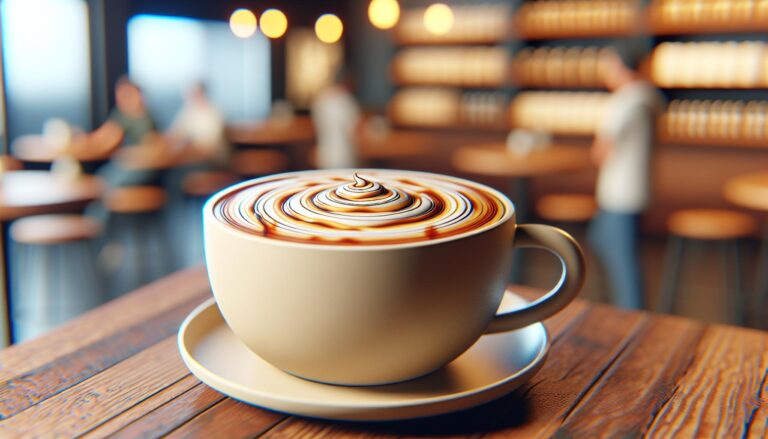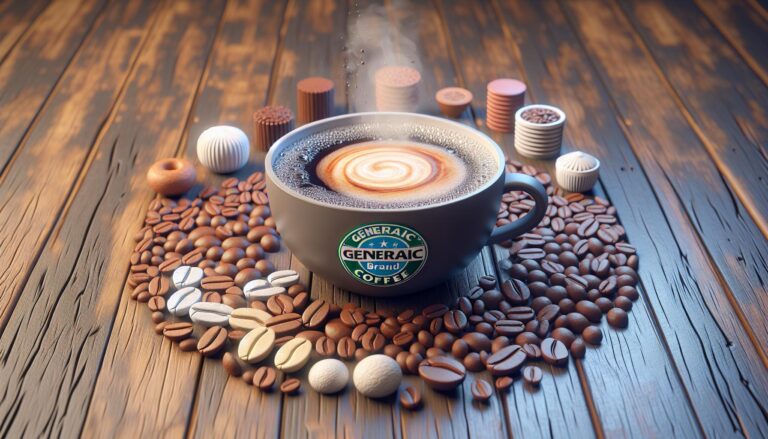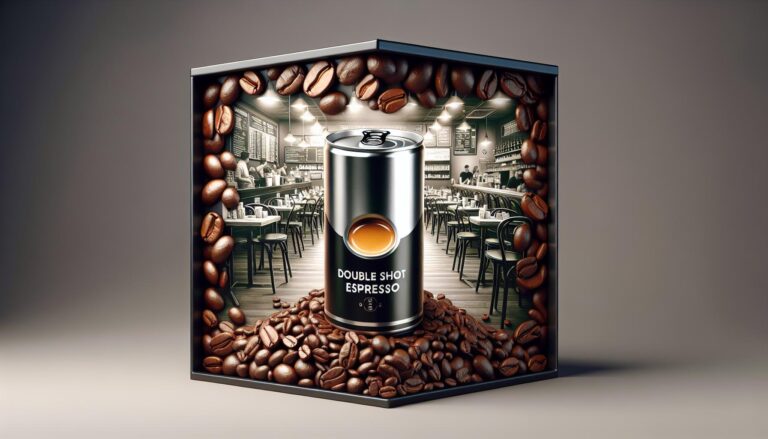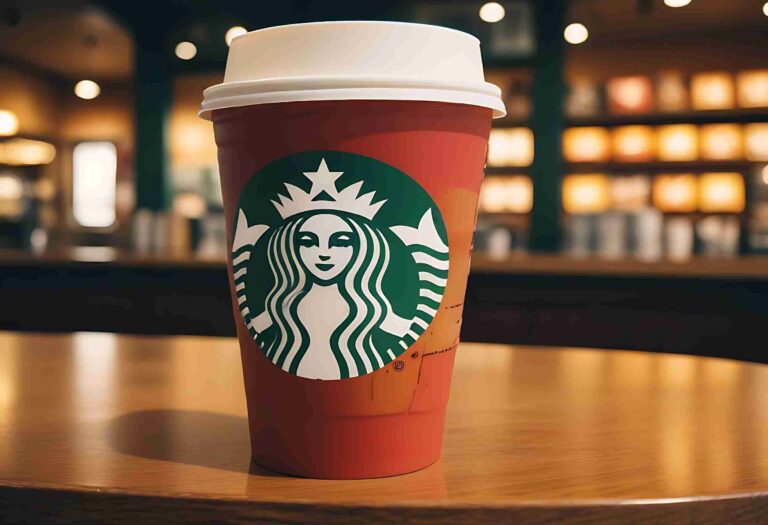Starbucks Caffeine Content: Make Informed Choices on Your Favorite Beverages!
How Much Caffeine is in Starbucks Drink? The caffeine content in Starbucks drinks varies depending on the type of beverage and its size. For example, a Tall (12 fl oz) Blonde Roast coffee contains 270 mg of caffeine, while a Grande (16 fl oz) Pike Place Roast has 310 mg of caffeine.
Espresso-based drinks like a Tall Latte have about 75 mg of caffeine, and a Grande Cappuccino contains 150 mg of caffeine. For those looking for less caffeine, Tall Decaf Coffee has around 20 mg of caffeine.
Understanding the caffeine levels in your go-to Starbucks order can make a big difference in your energy levels and overall health. From the robust Pike Place Roast to the creamy Frappuccinos, each drink has a unique caffeine profile.
So, let’s explore the caffeine content of Starbucks’ popular beverages to help you make informed choices.
Key Takeaways
- Caffeine Awareness: Understanding the caffeine content in Starbucks beverages helps manage daily intake and make informed choices to boost energy levels while avoiding adverse health effects.
- Varied Caffeine Levels: Starbucks offers a wide range of drinks with different caffeine contents, from brewed coffee and espresso to tea and Frappuccinos, catering to diverse preferences and tolerance levels.
- Size Matters: The size of your Starbucks drink influences caffeine content; larger sizes typically have more caffeine, making it important to choose the right size based on your caffeine goals.
- Brewing Methods: Different brewing methods affect caffeine levels. Espresso-based drinks, drip coffee, and Cold Brew offer varying caffeine content, providing options to match specific needs.
- Health Considerations: While moderate caffeine intake can enhance alertness and performance, excessive consumption might lead to negative effects like jitteriness or insomnia. Being informed helps in balancing benefits and risks.
- Transparency and Consistency: Starbucks maintains consistent caffeine content through rigorous quality control and offers transparent information to help customers manage their caffeine intake effectively.
Overview of Starbucks Caffeine Content
Starbucks offers a broad range of beverages, each containing varying amounts of caffeine. Knowing the caffeine content helps you make better dietary choices and manage your energy levels.
The Importance of Knowing Caffeine Content
Understanding caffeine content is crucial for maintaining balanced energy levels throughout the day. High caffeine intake provides a quick energy boost but can lead to crashes.
For health-conscious consumers, knowing these details aids in tailoring consumption to match specific health needs. It also helps avoid adverse effects like jitteriness or insomnia.
Measuring Caffeine: How Starbucks Stacks Up
Starbucks provides detailed information on the caffeine content of its various drinks. This transparency allows you to select beverages that align with your caffeine tolerance and preferences.
For comparison, a standard 8-ounce brewed coffee has about 180 mg of caffeine, while a single espresso shot contains about 75 mg.
| Drink Category | Average Caffeine Content per Serving (mg) |
|---|---|
| Brewed Coffee (8 oz) | 180 |
| Espresso Shot (1 oz) | 75 |
| Latte (16 oz) | 150 |
| Americano (16 oz) | 225 |
| Frappuccino (varies by flavor) | 60-105 |
The Espresso Frappuccino has one of the highest caffeine contents among Frappuccinos due to the added shot of espresso.
The Mocha Frappuccino has a higher caffeine content compared to other Frappuccinos because of the mocha sauce.
These figures help you gauge your intake and choose beverages that align with your caffeine consumption goals.
Also Read: Starbucks Coffee Caffeine Content
Comparing Popular Starbucks Beverages
Starbucks offers a wide variety of beverages, each with unique caffeine levels. Here’s a breakdown of caffeine content in popular options to help manage your intake effectively.
Coffee Drinks
Coffee drinks at Starbucks provide varied caffeine content. A tall brewed coffee has 235 mg of caffeine, while a tall Americano contains 150 mg.
An Iced Caffè Americano is a popular choice for those seeking a high caffeine content in a refreshing format. Lattes, with steamed milk, contain less caffeine—a tall latte has 75 mg.
Espresso shots, and concentrated coffee, carry 75 mg per shot. An Iced Caramel Macchiato, prepared with pumps of vanilla syrup, ice, milk, espresso shots, and a drizzle of caramel syrup, offers unique and visually stunning flavors.
Frappuccinos, blended beverages, ranging from 65 mg (coffee-based) to 95 mg (espresso-based). These differences allow flexible choices based on caffeine preferences.
Chai Tea Latte and Alternatives
Tea and alternatives at Starbucks offer a broad range of caffeine levels. A tall black tea contains 40 mg of caffeine, while a green tea has 25 mg.
Herbal teas, like Mint Majesty, are caffeine-free. The Honey Citrus Mint Tea, also known as the ‘Medicine Ball,’ contains a small amount of caffeine from green tea.
Chai lattes mix black tea & spices, offering 70 mg of caffeine per tall cup. For a non-caffeinated option, try steamed milk or hot chocolate.
The Matcha Tea Latte is a popular choice available in both hot and iced versions. These choices accommodate various needs, from low to no caffeine intake.
This structure ensures an optimal understanding of Starbucks beverage caffeine content, aiding informed choices to match your health goals.
Read Also: Starbucks Espresso Caffeine Content
Factors Affecting Caffeine Content in Starbucks Drinks
The caffeine content in Starbucks drinks varies based on multiple factors. Understanding these influences helps you manage your intake effectively.
Size Variations in fl oz
The size of your Starbucks drink directly affects its caffeine content. Larger sizes generally contain more caffeine:
- Tall: Tall drinks have less caffeine compared to larger sizes. For example, a Tall Caffè Americano has about 75 mg of caffeine.
- Grande: Grande sizes usually contain more caffeine. For instance, a Grande Caffè Americano contains approximately 150 mg of caffeine.
- Venti: Venti sizes provide the highest caffeine content. A Venti Caffè Americano has around 225 mg of caffeine.
Brew Methods
Different brewing methods yield varying caffeine levels:
- Espresso-based Drinks: Espresso shots form the base of many Starbucks beverages and have concentrated caffeine. Each shot contains about 75 mg of caffeine. Iced espresso drinks, including the Iced Caffè Americano, offer a refreshing option with high caffeine content.
- Drip Coffee: Brewed coffee undergoes drip methods, resulting in higher caffeine content. A 16-ounce Grande brewed coffee has around 310 mg of caffeine.
- Cold Brew: The Cold Brew method steeps coffee grounds in cold water for an extended period, producing a smoother and more caffeinated drink. A Grande Cold Brew contains approximately 205 mg of caffeine.
Identifying these factors lets you make informed decisions about your caffeine consumption at Starbucks. Iced Green Tea is a customizable and refreshing option for tea lovers.
Also Read: Starbucks Latte Caffeine Content
Health Implications of Caffeine Consumption
Understanding caffeine’s health implications can help you make better choices at Starbucks.
Benefits of Caffeine
Caffeine can improve mental alertness and enhance physical performance. Consuming moderate amounts of caffeine, such as the levels found in a Starbucks latte or brewed coffee, often results in increased concentration.
Additionally, caffeine may boost metabolism and assist in fat burning. Some studies suggest caffeine intake is linked to a lower risk of Parkinson’s disease and certain types of cancer.
Potential Risks and Considerations
Excessive caffeine can lead to negative health effects. High caffeine intake might cause jitteriness, anxiety, or insomnia, particularly if consumed late in the day.
People sensitive to caffeine could experience heart palpitations or elevated blood pressure.
Pregnant women, individuals with heart conditions, or those on certain medications might need to limit caffeine consumption.
Understanding the caffeine content in Starbucks beverages, especially larger sizes or stronger brews, helps avoid these risks.
Also Read: Starbucks Cappuccino Caffeine Content
How Starbucks Manages Caffeine Consistency
Starbucks ensures consistent caffeine levels in its beverages through rigorous procedures and transparent communication.
Quality Control Procedures
Quality control is a critical component in managing caffeine consistency at Starbucks. Each batch of coffee is tested to confirm caffeine levels align with company standards.
Starbucks employs standardized brewing methods to maintain uniformity across all locations.
For example, baristas use precise measurements for espresso shots and filter coffee. These standardized protocols ensure drinks have consistent caffeine content regardless of the store you visit.
Customer Information and Transparency
Starbucks prioritizes customer information and transparency to help you manage your caffeine intake effectively.
Menu boards and the official Starbucks website provide detailed caffeine content for all drinks.
If you need more information, baristas can offer insights about the caffeine levels in your chosen beverage.
This transparency allows you to make informed decisions about your caffeine consumption and select the right beverage that aligns with your health needs and preferences.
Conclusion
Understanding the caffeine content in Starbucks beverages empowers you to make choices that align with your health and lifestyle goals.
By being aware of the varying caffeine levels in different drinks, you can enjoy your favorite Starbucks offerings without compromising your well-being.
Whether you’re looking to boost your energy with a bold espresso or prefer a lighter option like tea, knowing the caffeine content helps you tailor your intake effectively.
Always consider factors like drink size and brewing methods to manage your caffeine consumption better.
Stay informed and enjoy your Starbucks experience responsibly.
Also Read: Starbucks Macchiato Caffeine Content
Frequently Asked Questions
How much caffeine is in a Starbucks brewed coffee?
A standard 16-ounce (Grande) Starbucks brewed coffee contains approximately 310 milligrams of caffeine. However, the caffeine content can vary depending on the blend and brewing method.
What is the caffeine content of a Starbucks espresso shot?
A single Starbucks espresso shot contains about 75 milligrams of caffeine. This measurement remains consistent across various types of beverages, such as lattes and Americanos.
Are Frappuccinos high in caffeine?
The caffeine content in Frappuccinos varies widely. A Coffee Frappuccino (Grande) has 95 milligrams of caffeine, while a Creme Frappuccino generally has minimal caffeine unless it includes chocolate or other caffeinated additions.
Which Starbucks drink has the highest caffeine content?
A Venti Blonde Roast brewed coffee typically has the highest caffeine content, with around 475 milligrams per serving.
How can I find out the caffeine content of my favorite Starbucks drink?
Starbucks provides detailed caffeine content information on their website and menu boards. You can also ask a barista for specific caffeine information for your drink.
Does the size of the drink affect its caffeine content?
Yes, larger sizes generally contain more caffeine. For example, a Tall (12 oz) brewed coffee has less caffeine than a Grande (16 oz) or Venti (20 oz).
What are the caffeine levels in Starbucks tea drinks?
A Grande (16 oz) cup of Starbucks Chai Tea Latte has around 95 milligrams of caffeine, while most herbal teas are caffeine-free. Green and black teas vary in caffeine content, typically ranging from 20 to 70 milligrams per serving.
Are there any caffeine-free options at Starbucks?
Yes, Starbucks offers various caffeine-free options, including herbal teas, steamed milk drinks, and smoothies. Decaf Brewed Coffee is a popular caffeine-free option for those who enjoy the taste of coffee without the caffeine. Also, you can request a decaf version of their coffee and espresso beverages. The Vanilla Bean Crème Frappuccino is a popular caffeine-free option among Frappuccinos.
How does caffeine content vary based on brewing methods?
Brewing methods like drip coffee, cold brew, and espresso extraction influence caffeine levels. Cold brew generally has more caffeine due to its longer steeping process, while espresso has concentrated caffeine amounts in smaller volumes.
What are the potential health effects of excessive caffeine consumption?
Excessive caffeine intake can lead to issues such as jitteriness, anxiety, insomnia, heart palpitations, and elevated blood pressure. Pregnant women and individuals with heart conditions must monitor their caffeine consumption.
How does Starbucks ensure consistent caffeine levels in their drinks?
Starbucks employs stringent quality control and standardized brewing procedures to maintain consistent caffeine levels across all locations. They also prioritize transparency by listing caffeine content on their menu boards and website.
What are the potential benefits of moderate caffeine consumption?
Moderate caffeine consumption can improve mental alertness, enhance physical performance, and boost metabolism. However, it’s necessary to tailor caffeine intake to individual health conditions and preferences.

